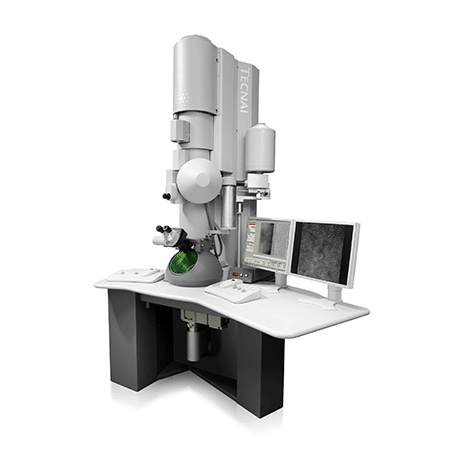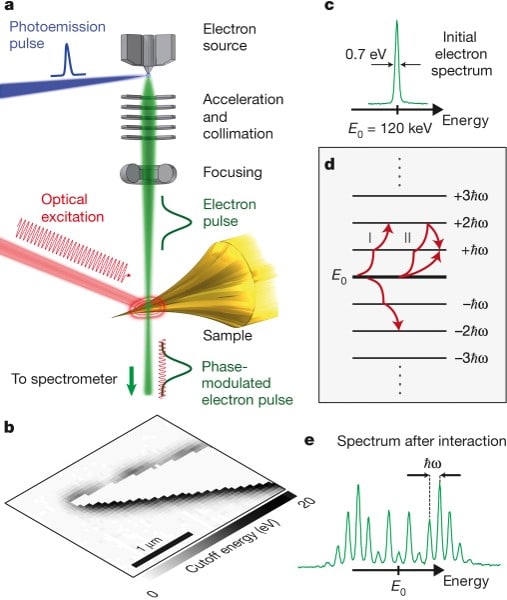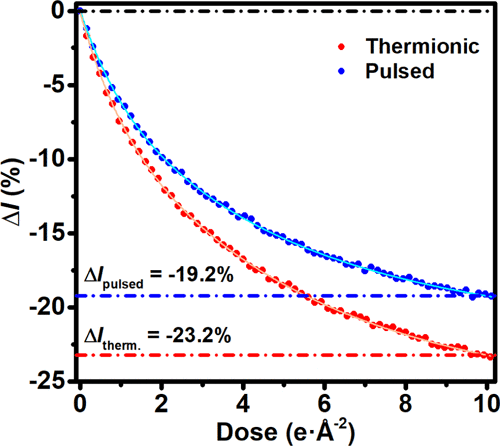Ultrafast Electron Microscopy
Electron microscopy (EM) is an indispensable tool for studying matter at atomic length scales and as such essential for progress in materials science and the life sciences. With exposure times of minimally milliseconds, however, EM was restricted until recently to ‘portrait photography’, providing quasi-static information only on systems in or near thermodynamic equilibrium. The recent introduction of ultrafast pulsed lasers in EM has brought (sub)picosecond timescales within reach, allowing observation of the actual atomic motion during chemical reactions, phase transitions, conformational changes, etc.: making ’molecular movies’. The exciting new field of Ultrafast electron microscopy (UEM) creates new challenges and possibilities, forcing us to rethink all elements of conventional EM. We have introduced resonant microwave cavities as dynamic charged particle optics, manipulating the 6D phase space distribution of the electron pulses to achieve even better temporal resolution.

We provide a system that enables ultrafast electron microscopy without the need for an amplified femtosecond laser to generate electron pulses by photoemission. In addition, the microscopy system allows fast switching between pulsed operation and conventional continuous operation. The microscopy system is based on a deflection cavity to chop the continuous beam from a conventional high-brightness electron gun into ultrashort electron pulses (< 100 fs). The beam can be chopped either at 3 GHz repetition rate using a deflection cavity in single mode or at 75 MHz rep rate using a deflection cavity in dual mode. In the latter case the repetition rate can be further reduced by chopping the beam using a fast blanker, which is a standard component in state-of-the-art electron microscopes. To enable pump-probe experiments, the phase of the oscillating microwave fields in the deflection cavity has to be synchronized to the femtosecond pump laser using synchronisation electronics.
Imaging hypersonic phonons
Cremons et al. Phys. Rev. Materials 1, 073801 (2017)
Direct imaging—with four-dimensional ultrafast electron microscopy—of the emergence, evolution, dispersion, and decay of photoexcited, hypersonic coherent acoustic phonons in nanoscale germanium wedges. Coherent strain waves generated via ultrafast in situ photoexcitation were imaged propagating with initial phase velocities of up to 35 km/s across discrete micrometer-scale crystal regions. The authors observe that, while each wave front travels at a constant velocity, the entire wave train evolves with a time-varying phase-velocity dispersion, displaying a single-exponential decay to the longitudinal speed of sound (5 km/s) and with a mean lifetime of 280 ps. They also find that the wave trains propagate along a single in-plane direction oriented parallel to striations introduced during specimen preparation, independent of crystallographic direction.

Further, by precisely determining the experiment time-zero position with a plasma-lensing method, the authors showed that wave-front emergence occurs approximately 100 ps after femtosecond photoexcitation, which matches well with Auger recombination times in germanium. They conclude by discussing the similarities between the imaged hypersonic strain-wave dynamics and electron/hole plasma-wave dynamics in strongly photoexcited semiconductors.
Photon induced near field electron miscroscopy
Feist et al. Nature 521, 200–203 (2015)
Coherent manipulation of quantum systems with light is expected to be a cornerstone of future information and communication technology, including quantum computation and cryptography. Light-phase-modulated electron states near atoms and molecules are essential for the techniques of attosecond science, including the generation of extreme-ultraviolet pulses and orbital tomography. In contrast, the quantum-coherent phase-modulation of energetic free-electron beams has not been demonstrated, although it promises direct access to ultrafast imaging and spectroscopy with tailored electron pulses on the attosecond scale. In this featured article the authors demonstrate the coherent quantum state manipulation of free-electron populations in an electron microscope beam. They employ the interaction of ultrashort electron pulses with optical near-fields to induce Rabi oscillations in the populations of electron momentum states, observed as a function of the optical driving field. Excellent agreement with the scaling of an equal-Rabi multilevel quantum ladder is obtained, representing the observation of a light-driven ‘quantum walk’ coherently reshaping electron density in momentum space.

The authors noted that, after the interaction, the optically generated superposition of momentum states evolves into a train of attosecond electron pulses. Their results reveal the potential of quantum control for the precision structuring of electron densities, with possible applications ranging from ultrafast electron spectroscopy and microscopy to accelerator science and free-electron lasers.
Mitigating Damage Using Pulsed-Beam TEM
VandenBussche et al. ACS Omega 5, 31867-31871 (2020)
Using a pulsed-beam transmission electron microscope, the authors discovered a reduction in damage to methylammonium lead iodide (MAPbI3) as compared to conventional beams delivered at the same dose rates. For rates as low as 0.001 eÅ−2s−1, we find up to a 17% reduction in damage at a total dose of 10 eÅ−2. They systematically studied the effects of number of electrons in each pulse and the duration between pulse arrival. Damage increases for both, though the number of electrons per pulse has a larger effect. A crossover is identified, where a pulsed beam causes more damage than a conventional one. Although qualitatively similar to previous findings, the degree to which damage is reduced in MAPbI3 is less than that observed for other materials, supporting the hypothesis that the effects are material- and damage-mechanism-dependent.

Despite this, the observation here of damage reduction for relatively large electron packets (up to 200 electrons per pulse) suggests that MAPbI3 is in fact less susceptible to irradiation than C36H74, which may be related to reported self-healing effects. This work provides insights into damage processes and durability in hybrid perovskites and also illustrates the viability of using pulsed-beam TEM to explore the associated molecular-level routes to degradation, analogous to laser-accelerated energetic pulsed electron beams and the study of damage to biomolecules, cells, and tissues in radiobiology.

